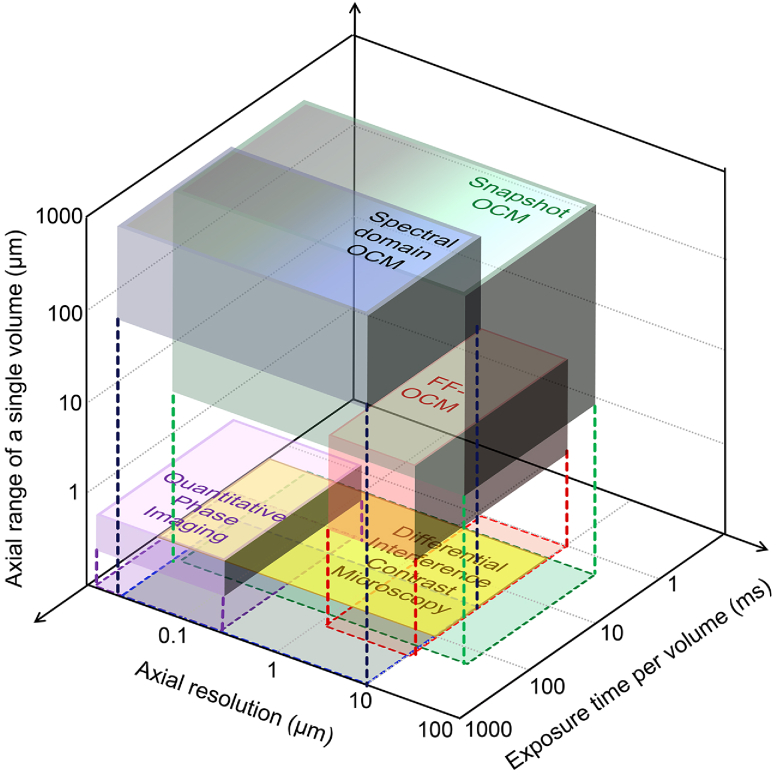Fig. 5.
Illustrative comparison of the capabilities of different optical imaging modalities based on their axial resolution, exposure time per volume, and the axial range covered by a single volume. Although QPI does not have an axial range in the traditional sense, the reconstructed phase does correspond to the axial profiles of the samples. Similarly, although the axial resolution of SD-OCM and Snapshot OCM is limited to a few microns based on the intensity images alone, the darker areas are included because the axial profiles due to a few tens of nanometers could be recovered from the phase of the images. The transparent rectangles represent the footprint of the 3D objects on the 2D plane and the dotted lines help orient location of each 3D object in space.

